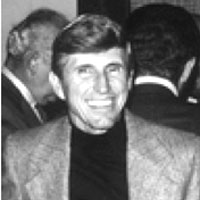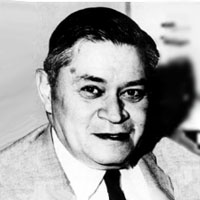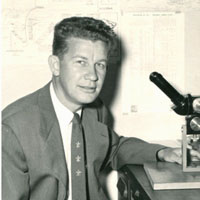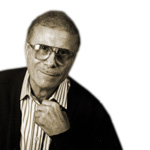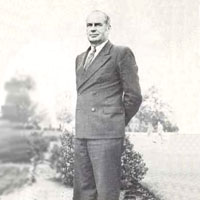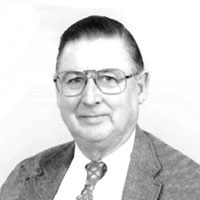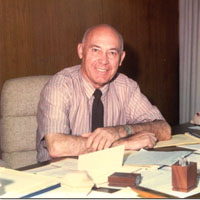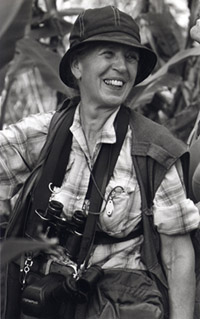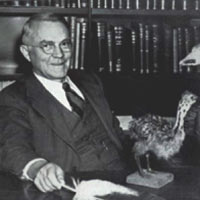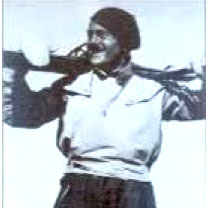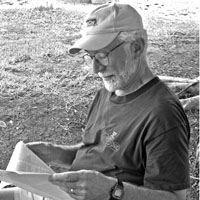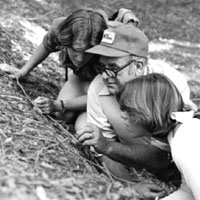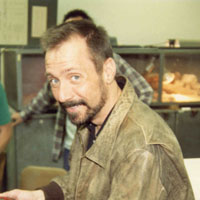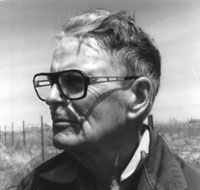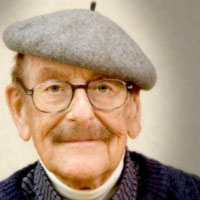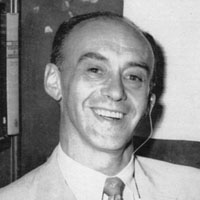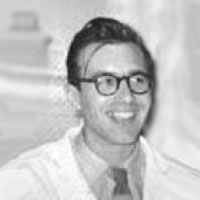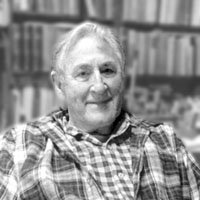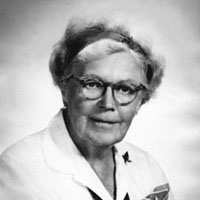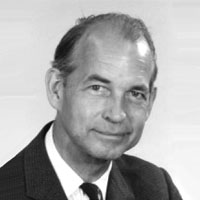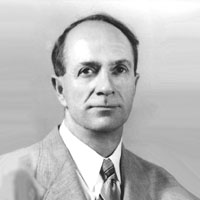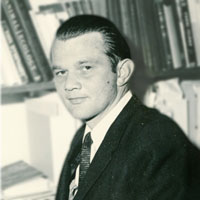In Memoriam
Allen, Bennet Mills (1877-1963)
Dr. Allen was the first chair of the former Department of Zoology. His fundamental contributions toward understanding the role of the endocrine glands in growth and development are a landmark in the formative period of modern endocrinology. Read about Dr. Allen’s life and work

Appleman, David (1899-1995)
Dr. Appleman spent 68 years at the University of California. “David Appleman and UCLA virtually grew up together.” Dr. Appleman’s research centered first on the nitrogen nutrition of citrus plants, and later on mammalian cancer biology.
Atsatt, Sarah Rogers (1888-1971)
Dr. Atsatt was an authority on herpetology and reptilian behavior, who may have been the first woman faculty biologist at UCLA. The Pomona College Quarterly Magazine of October, 1917, has an article on lizard hunting in the San Jacinto Mountains by Sarah R. Atsatt ’10. Note that this is 1910, not 2010!
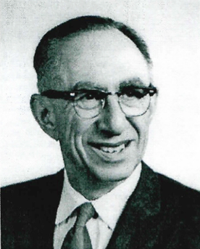
Ball, Gordon H. (1899-1982)
Dr. Ball was a UCLA Medalist, and served as chair. Dr. Ball made contributions to protozoology and parasitology through his work with gregarines and on in vitro culture of the sporogonous (mosquito) stages of malaria.
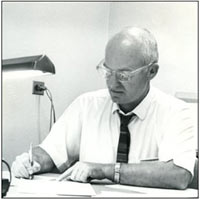
Bartholomew, George (1919-2006)
The Bartholomew Fellowship for Field Biology is named for Dr. George Bartholomew, who received the Distinguished Teaching Award, was a member of the National Academy of Sciences, and served as chair. Dr. Bartholomew was one of the founders of the modern fields of comparative animal physiological ecology and behavioral physiology.

Beckwith, Theodore Day (1879-1946)
Dr. Beckwith was an experimental pathologist and Chairman of the Department of Bacteriology at UCLA.
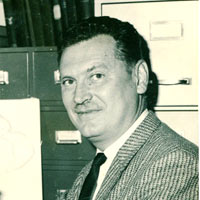
Belkin, John Nicholas (1913-1980)
Dr. Belkin was a leader in the field of systematic entomology and mosquito systematics.
Bellamy, Albert M. (1892-1972)
Dr. Bellamy served as chair, and as Dean of Life Sciences. Dr. Bellamy’s research was in the field of genetics, particularly in the relation between sex and color pattern of the poeciliid fishes.
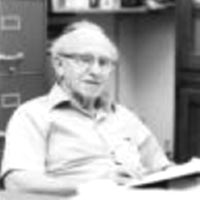
Biale, Jacob B. (1908-1989)
Dr. Biale was an authority on metabolic biochemistry, notably the ripening-related metabolism of avocado mitochondria.
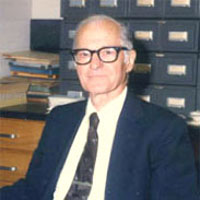
Collias, Nicholas Elias (1914-2010)
Dr. Collias was an internationally prominent researcher in the field of animal behavior, especially bird behavior.
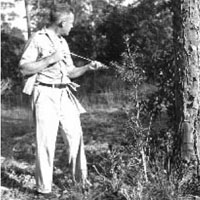
Cowles, Raymond Bridgman (1896-1975)
Dr. Cowles’ research on reptile thermoregulation was a major foundation of present understanding of the use of heat by vertebrate animals. He was also an early voice of concern about overpopulation and its environmental impact.
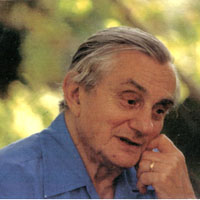
Crescitelli, Frederick (1909-1992)
Dr. Crescitelli was an authority in many areas of vision research, notably the physiology of the eye and related aspects of neurobiology.
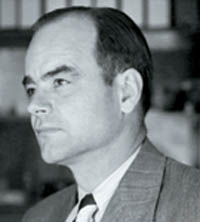
Ebeling, Walter (1907-2010)
Dr. Ebeling was a pioneering researcher in the field of urban entomology. His research included the life history of insects and the control of citrus and avocado insects.
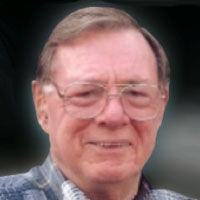
Ebersold, Wilbur T. (1928-2009)
Dr. Ebersold served as chair. His research focused on Chlamydomonas genetics, and his work laid the foundation for a major field of genetic research which scientists benefit from today.
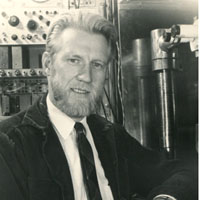
Eckert, Roger O. (1934-1986)
Dr. Eckert was a neuroscientist who was internationally prominent for his outstanding and prolific work in cellular neurobiology.
Edney, Eric Berry (1913-2000)
Dr. Edney is best known for his work on several aspects of water balance mechanisms in arthropods, particularly with respect to adaptations to life in deserts.
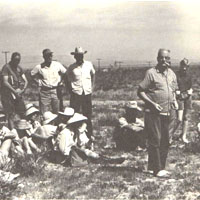
Epling, Carl Clawson (1894-1968)
Dr. Epling is best known for being the major authority on the Lamiaceae (mint family) of the Americas from the 1920s to the 1960s. In his later years he also developed an interest in genetics and became one of the important figures in the development of the Neo-Darwinian synthesis.
Furgason, Waldo Hamlet (1902-1975)
Dr. Furgason’s most significant scientific contribution was his establishment of the protozoan ciliate genus Tetrahymena. This resulted from his clarification of a group of similar genera and was based on a critical study of the morphological pattern of the organelles of the mouth area. In recent years, Tetrahymena has probably been investigated more thoroughly than any other ciliate. From the yearbook Southern Campus, 1920: “Dr. Furgason says, ‘If heaven were a place where one could ask God the answers to all one’s questions, it would be hell to a scientist.'”
Hamner, Karl Clemens (1908-1989)
Dr. Hamner served as chair of the Department. Dr. Hamner was a botanist whose research involved photoperiod phenomena, biological clocks, and water relations in plants.
Haupt, Arthur Wing (1894-1987)
Dr. Haupt was a plant morphologist who wrote several well-known textbooks, including “Fundamentals of Biology” in 1928.
Howell, Thomas Raymond (1924-2004)
Dr. Howell was “a consummate professional who effectively bridged the older tradition of ornithology, with its eclectic background in taxonomy, systematics, classification, natural history and evolution, and the current emphases in behavior, physiology, ecology, and molecular genetics.”
Jahn, Theodore Louis (1905-1979)
Dr. Jahn served as chair. “His research covered a broad field of biology, including protozoan taxonomy, protozoan physiology insect physiology, membrane bioelectric potentials, and bone formation.”
James, Thomas William (1918-1995)
Dr. James served as chair. His primary research was dominated by his interest in cell division. In order to examine biochemical events occurring at various stages of the cell cycle, he devoted much effort to establishing cell cycle synchrony (i.e., aligning the cells in a culture at the same part of the cell cycle). From these studies it was possible to establish the duration of the cell cycle as well as the beginning and end of events such as DNA synthesis.
Johnson, Arthur Mourad (1878-1943)
Dr. Johnson was a leading authority on the taxonomy and plant ecology of the northwestern tier of states and of northern Minnesota.
Kavanau, J. Lee (1922-2018)
Dr. Kavanau was a well-known developmental biologist in the early stages of his career and became an accomplished experimental animal behaviorist later on. He published a significant number of more theoretically oriented papers after retiring from UCLA over 20 years ago. His experimental studies of the last 15 years have related to avian behavior, evolution, and responses to unnatural light cycles, working primarily with small parrots. These studies led him into his most recent field of study, the evolution of mechanisms of memory (synaptic efficacy maintenance) and of sleep, and the function(s) of sleep.
Krichesky, Boris (1904-1949)
Dr. Krichesky served as chair, and died while in active faculty service. He was an endocrine researcher.
Lang, Anton (1913-1996)
Dr. Lang was a member of the National Academy of Sciences. His research focused on plant development, particularly on photoperiodic regulation of flowering.
Lazier, Edgar Locke (1899-1973)
Dr. Lazier was the author of a laboratory manual of the anatomy of the spiny dogfish, and two revisions of Marshall’s Introduction to Anatomy, a widely used textbook. Dr. Lazier also served as UCLA’s Director of Admissions.
Lewis, F. (Frank) Harlan, (1919-2008)
Dr. Lewis was one of the early pioneers in the genetics of plant speciation. He also served as chair of the department, and as Dean of Life Sciences from 1962-1981. Dr. Lewis was one of the early pioneers in the genetics of plant speciation.
Lunt, Owen Raynal (1921-2011)
Dr. Lunt was Director of the Laboratory of Structural Biology and Molecular Medicine at UCLA.
Mathias, Mildred E. (1906-1995)
The UCLA Mildred E. Mathias Botanical Garden was named after this adventurous and groundbreaking professor. Her pioneering efforts in the tropics earned the great admiration of her colleagues and led to her selection as UCLA Medical Auxiliary Woman of Science Award (1963), and weighed heavily in selecting Mildred Mathias as one of twelve Women of the Year (1964) by the Los Angeles Times. UCLA Chancellor Franklin D. Murphy called her “one of the great ladies of this campus.”
Miller, Loye Holmes (1874-1970)
Dr. Miller was an ornithologist and author of Birds of the Campus, published by the University of California Press in 1947.
Mosauer, Walter (1905-1937)
Dr. Mosauer was a herpetologist, and the father of skiing in Southern California.
Muscatine, Leonard (1932 – 2007)
Dr. Muscatine was a pioneer in the field of marine biology, who played a key role in the development of the understanding of algal-invertebrate symbioses.
Norris, Kenneth S. (1924-1998)
Dr. Norris was an acclaimed marine mammal researcher and the founder of the University of California Natural Reserve System.
Obst, Bryan Steven (1956-1991)
Dr. Obst was an ornithologist; much of his research was conducted on petrels in Antarctica, although he also studied penguins, auklets, grouse, geese and chickens, from Antarctica to Alaska. Dr. Obst died while in active faculty service.
Olson, Everett Claire (1910-1993)
Dr. Olson, who served as department chair, was among the great vertebrate paleontologists of the twentieth century.
Peabody, Frank Elmer (1914-1958)
“His quiet and unassuming manner belied the impact that his studies on fossil trackways and the skeletal structures of reptiles and amphibians had in renewing an international focus of interest on the earliest evolution of reptiles and on the structure and habits of these long-extinct animals.” Dr. Peabody died while in active faculty service.
Phinney, Bernard O. (1917-2009)
“His observations were some of the first to show that this class of plant hormones, which affect such critical developmental phenomena as seed germination, stem elongation, and fertilization, could be understood using a biochemical genetics approach.” Dr. Phinney was a familiar and beloved figure on campus from 1947 until his death.
Plunkett, Orda Allen (1899-1975)
Dr. Plunkett was author or coauthor of forty-five scientific publications pertaining to fungi as pathogens of plants and animals, including those of man.
Schechtman, Abraham Mandel (1909-1962)
Dr. Schechtman and his students made notable contributions toward the demonstration that the structural maturation of the organism is accomplished at highly reproducible times by the onset of competence to synthesize specific protein components. Dr. Schechtman became, through his studies in depth in this area, one of the world leaders in this field. He died while in active faculty service, and the department’s Schechtman Award is named in his honor.
Scherbaum, Otto (1925-1969)
Dr. Scherbaum elucidated the stages in nucleic acid synthesis, the changes in amino acid composition, the role of various enzymes at different periods in the cell cycle, alterations in carbohydrates, lipids and proteins, changes in phosphorus-containing compounds, as well as the temporal sequence of morphological changes in synchronized cells. He became one of the leading authorities in this new type of investigation into cell biology. Dr. Scherbaum died while in active faculty service, and the department’s Scherbaum Award is named in his honor.
Schroeder, Charles Arthur (1913-2001)
During his long and productive teaching career, he conducted research on many subtropical and tropical fruits, both at UCLA and abroad. These included avocado, cherimoya, persimmon, loquat, white sapote, kiwi, cacao, peach palm, date, and citrus, among others. He was involved in some of the early exploration for avocado rootstocks in Mexico, Central America, Peru, and Ecuador. In addition to teaching and research, Art directed the first 16 years of the pioneering Fulbright project at UCLA and other southern California institutions, which continues today. He also spent several years as head of the Study Abroad Program at the University. In 1963 he was named one of six outstanding teachers of the year in the student annual, Southern Campus.
Scott, Flora Murray (1891-1984)
Dr. Scott served UCLA as Chairman of the Department of Botany, Plant Anatomist in the Agriculture Experiment Station, Assistant Director of the Botanical Garden, member of the Legislative Assembly and many Senate and departmental committees, secretary of the Academic Senate, and founder and first president of the UCLA Association of Academic Women. She was concerned with the broad field of biology from fossil to living plants, with her major interest centered on physiological plant anatomy. Her interpretation of plant structure using fresh tissue under light microscope was complemented later with ultrasonic and the electron microscope investigations. Dr. Scott was a UCLA Medalist.
Fritiof Sjostrand (1912-2011)
Dr. Sjostrand was a pioneer in electron microscopy.
Sponsler, Olenus Lee (1879-1953)
The founder of the UCLA Botanical Garden, Dr. Sponsler served as director of the unofficial garden from 1929 to 1937, at which time Professor Arthur Munrad Johnson was appointed as his successor. A plant taxonomist, Johnson was recognized for his special talents in biological illustration.
Stoutemyer, Vernon Theodore (1905-1992)
In 1946, Dr. Stoutemyer was selected to chair the newly established Department of Floriculture and Ornamental Horticulture in the College of Agriculture at Los Angeles. Here he founded the first turf research program on the West Coast, which was greeted enthusiastically by managers of the golf courses and public parks that were then undergoing much expansion. Colleagues under his direction developed programs on the physiology and commercial production of several ornamental plant and flower crops, some involving the then new technique of plant tissue culture.
Walker, Boyd W. (1917-2001)
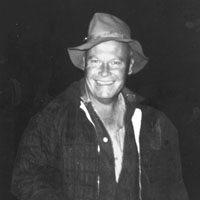
In the 1950s, Dr. Walker headed the Salton Sea Project financed by the California State Department of Fish and Game. The project resulted in the benchmark publication, “Ecology of the Salton Sea.” This work provides a database that is one of the scientific foundations for current debates about the management and future of the Salton Sea. He believed strongly in field studies of fishes, and took his students and collaborators on many extensive field trips along the west coasts of California and Mexico and as far afield as the Galapagos Islands, Ecuador.
Read about Dr. Walker’s life and work:
www.universityofcalifornia.edu/senate/inmemoriam/BoydW.Walker.htm
Walters, Vladimir (1927-1987)
Dr. Walters was an ichthyologist.
Wildman, Samuel Goodnow (1912-2004)
Dr. Wildman was an early member of the Molecular Biology Institute at UCLA. His viral studies led to the discovery of what he first called Fraction I protein, later named rubisco. This protein is found in chloroplasts and is an important enzyme in photosynthesis. It is also the most abundant protein in plants and probably on earth. The fact that he was able to crystallize it led to David Eisenberg’s group determining its three-dimensional structure. Sam continued his interest in chloroplasts with studies of their structure and particularly the organization of the photosynthetic membranes within chloroplasts.

